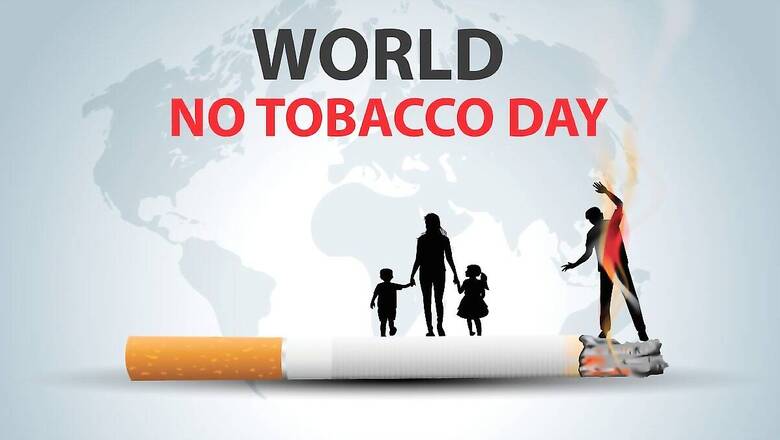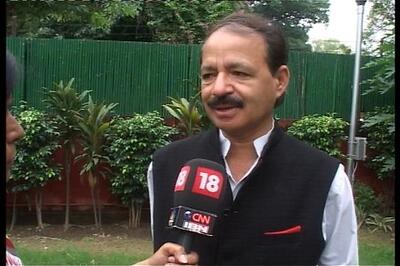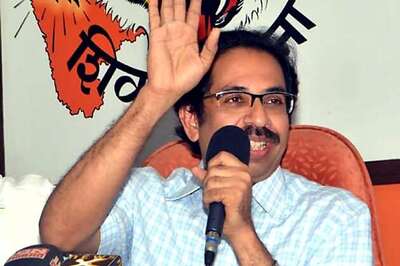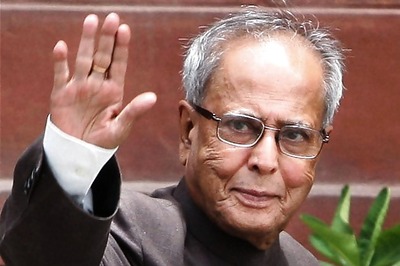
views
Every year on May 31, the world comes together to observe World No Tobacco Day. This day, created by the Member States of the World Health Organisation (WHO) in 1987, aims to draw global attention to the tobacco epidemic and the preventable deaths and diseases it causes. World No Tobacco Day highlights the importance of raising awareness about the dangers of tobacco use, exposing the tactics of tobacco companies, and promoting the fight against this global health crisis. This annual event serves as a powerful reminder of our duty to protect our health and the health of future generations.
Origin and Significance of World No Tobacco Day
World No Tobacco Day began with the World Health Assembly’s Resolution WHA40.38 in 1987, which called for a World No-Smoking Day on April 7, 1988. Resolution WHA42.19 in 1988 gained momentum with the initiative, establishing May 31 as World No Tobacco Day. This day shines a spotlight on the health risks associated with tobacco use and advocates for effective policies to reduce tobacco consumption.
Global Tobacco Epidemic: A Grim Reality
Tobacco use remains one of the leading causes of preventable death worldwide. According to the WHO, tobacco kills more than 8 million people each year, including over 1.2 million non-smokers exposed to second-hand smoke. The tobacco epidemic is not just a health crisis; it also places a significant economic burden on societies, with tobacco-related illnesses leading to substantial healthcare costs and lost productivity.
In India, the situation is particularly alarming. The country is the second-largest consumer and producer of tobacco globally, with a significant portion of its population using tobacco. The Tobacco Atlas reports that nearly 28.6 per cent of adults and about 15 per cent of children aged 13 to 15 use tobacco in some form. The consequences are dire, with tobacco-related diseases causing almost 13 per cent of all deaths in India.
Smokeless Tobacco: A Growing Concern
In India, smokeless tobacco products, such as gutka, khaini, and betel quid, are particularly prevalent. These products often attract users at a young age. Studies show that children as young as 9 to 10 years old start using these products, leading to early addiction and a lifelong struggle with tobacco dependence.
The health implications of smokeless tobacco use are severe. It is a major cause of oral cancer, which accounts for a significant portion of cancer cases in India. Additionally, smokeless tobacco use leads to other health issues like gum disease, tooth decay, cardiovascular disease, decreased sperm counts and early abortions. Early initiation compounds these health risks, as prolonged exposure to harmful chemicals in tobacco leads to more significant health problems over time.
Impact on Youth: The Early Initiation Crisis
Early initiation of tobacco use among children and adolescents is a growing concern in India. The onset of tobacco use at a young age often results in poor health outcomes, including lower Body Mass Index (BMI) among adolescents and youth. This early exposure to nicotine and other harmful substances stunts growth, impairs cognitive development, and increases the likelihood of addiction.
The daily consumption of smokeless tobacco products like khaini significantly impacts household finances. The cost of these products takes up a substantial portion of household income, which could otherwise be used for essential needs such as nutrition, education, and healthcare. This economic burden exacerbates poverty and limits opportunities for upward mobility, especially in low-income households.
E-Cigarettes: A New Threat
While traditional tobacco products continue to pose significant health risks, e-cigarettes have emerged as a new threat. Marketed as a safer alternative to smoking, e-cigarettes often attract young users with flavours and sleek designs. However, studies show that e-cigarettes can lead to nicotine addiction and serve as a gateway to traditional tobacco use. The long-term health effects of e-cigarette use are still being studied, but early evidence suggests potential harm to lung health and increased risk of cardiovascular disease.
Targeting the Vulnerable
Tobacco companies target vulnerable populations, especially children and adolescents. In India, studies show that tobacco companies often advertise products around schools and use tactics designed to appeal to children. They sell single cigarettes, which are more affordable for children, and place tobacco products alongside candies and toys to attract young buyers.
The prevalence of tobacco use among children in India is disturbingly high. A study conducted in Gujarat revealed that 53.2 per cent of children aged 9 to 13 use tobacco products. The easy accessibility of tobacco products and the influence of family members who use tobacco are significant factors contributing to this high prevalence.
The Role of Policy and Enforcement
Despite laws like the Cigarettes and Other Tobacco Products Act (COTPA) of 2003, which prohibits the sale of tobacco to minors and bans tobacco advertising within 100 yards of schools, enforcement remains weak. This lax enforcement allows tobacco companies to continue targeting children and adolescents with their marketing strategies.
The WHO Framework Convention on Tobacco Control (FCTC), an international treaty adopted in 2003, provides a comprehensive approach to reducing tobacco use through measures like banning tobacco advertising, increasing tobacco taxes, and creating smoke-free environments. However, these measures are only effective with robust implementation and enforcement at national and local levels.
Harnessing the Demographic Dividend
India’s demographic dividend presents a unique opportunity for economic growth and development. However, this potential can only be realised if the youth population is healthy and capable of contributing productively to society. Early initiation of tobacco use undermines this potential by compromising the health and well-being of young people.
Protecting Our Future: Focusing on Children
Children are the future of our nation, and protecting them from the dangers of tobacco is imperative. Early initiation of tobacco use among children has long-lasting effects, leading to lifelong addiction and significant health burdens. Therefore, it is crucial to focus on preventing tobacco use among children and adolescents.
- Strengthening Enforcement: We must strictly enforce existing tobacco control laws and policies, which should involve regular monitoring of tobacco sales and advertising practices, particularly around schools.
- Raising Awareness: Public awareness campaigns highlighting the dangers of tobacco use and tobacco companies’ manipulative tactics are essential. These campaigns should target adults and children, emphasising the health risks and the importance of tobacco-free lifestyles.
- Supporting Cessation: Supporting individuals who wish to quit tobacco is vital, which includes access to cessation programmes, counselling, and medications that can help people overcome addiction.
- Engaging Communities: Community-based initiatives involving civil society, schools, and local organisations can significantly prevent tobacco use among youth. These initiatives should focus on education, peer support, and creating tobacco-free environments.
- Promoting Healthy Alternatives: Encouraging healthy behaviours and alternatives to tobacco use, such as sports and recreational activities, can help reduce the appeal of tobacco among young people.
- Economic Incentives: Offering economic incentives for families to reduce tobacco consumption and invest in their children’s health and education can help alleviate the financial burden of tobacco use.
World No Tobacco Day is a powerful reminder of the ongoing battle against the tobacco epidemic. It is a day to reflect on the progress made, acknowledge the challenges that remain, and recommit to protecting our health and the health of future generations. By raising awareness, strengthening policies, and supporting cessation efforts, we can move closer to a tobacco-free world. Let’s join hands in this fight and take a stand against tobacco, ensuring a healthier future for all.
Dr K Madan Gopal works as an Advisor to Public Health Administration, NHSRC, MoHFW GoI; Prof Dr Suneela Garg is Chair of the Program Advisory Committee, NIHFW, MoHFW GoI. The views expressed in this article are those of the author and do not represent the stand of this publication.




















Comments
0 comment